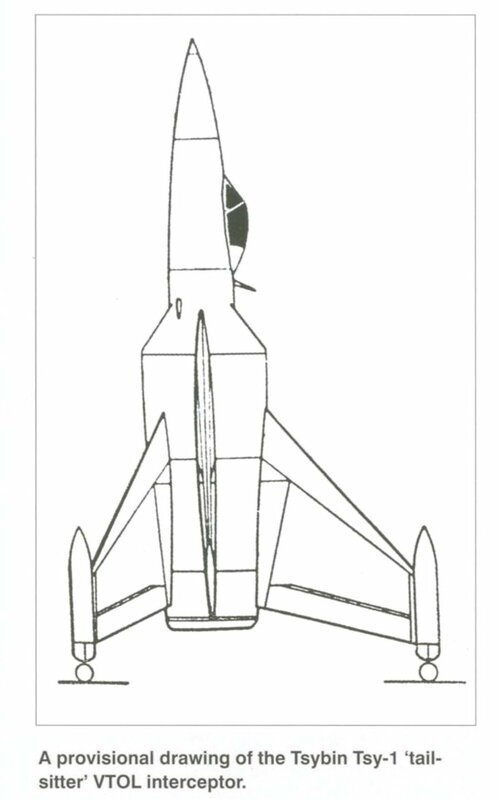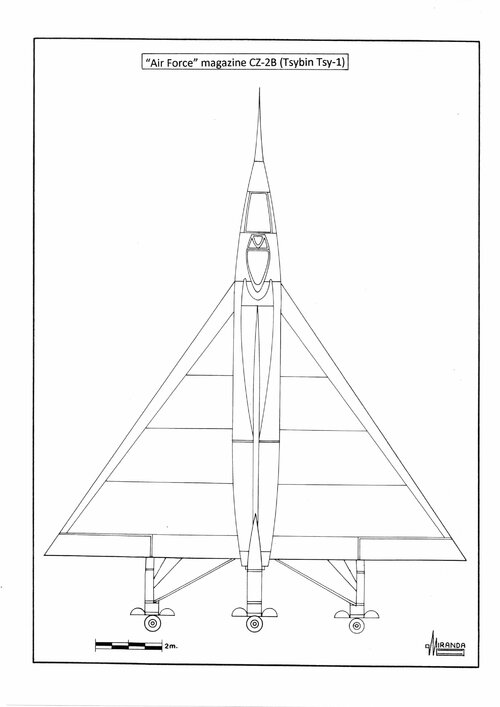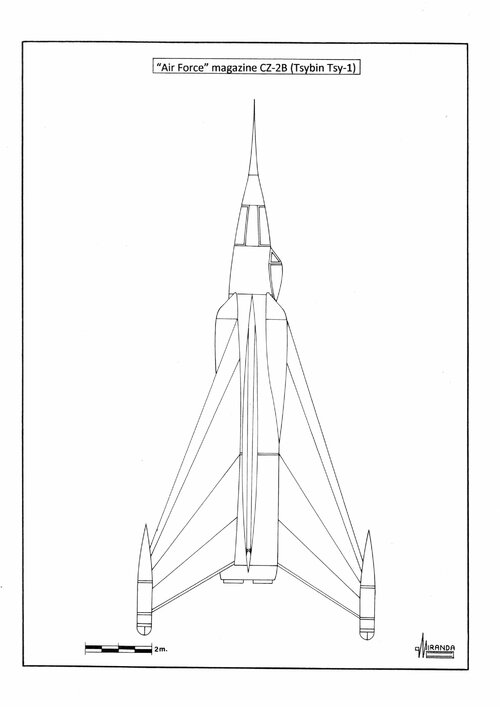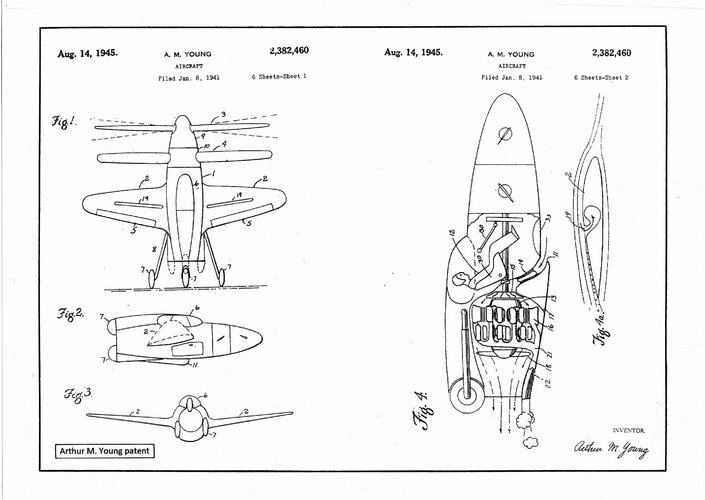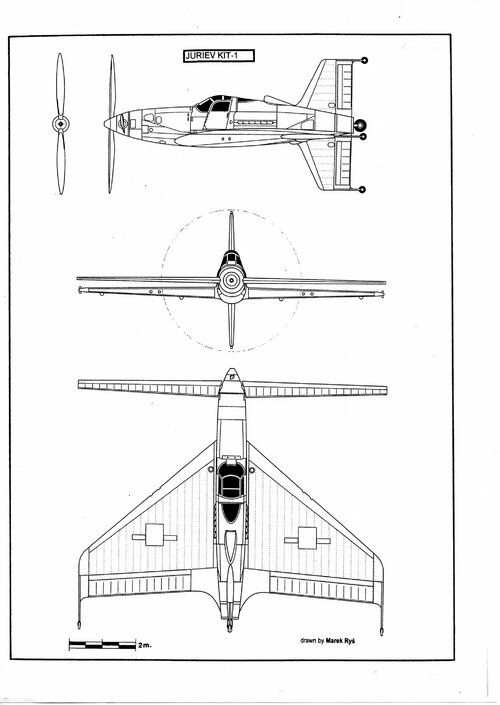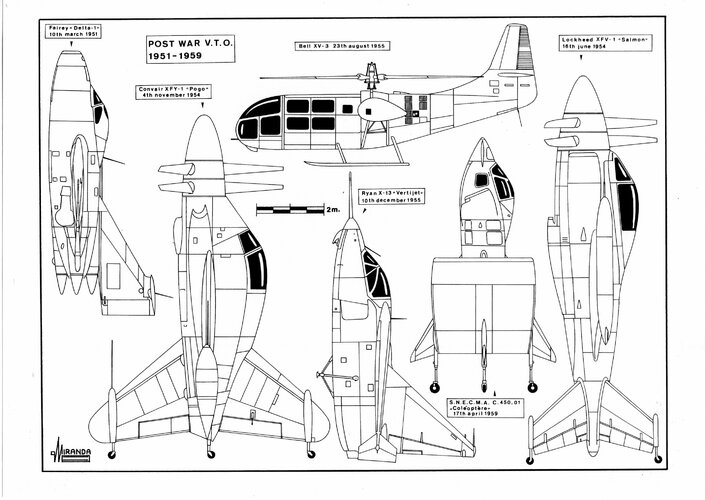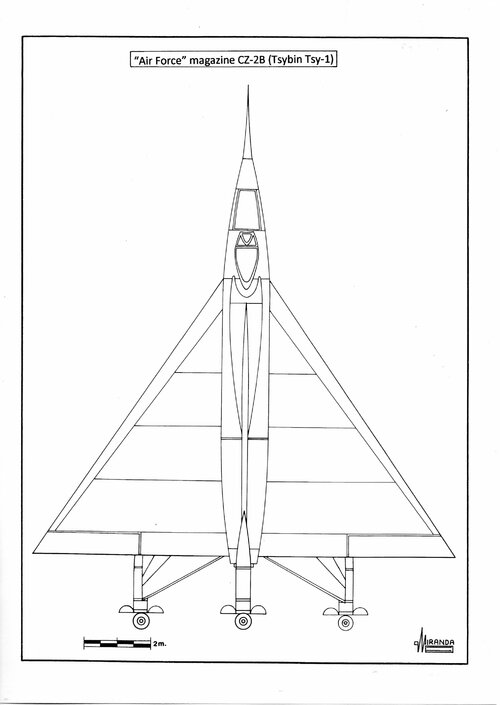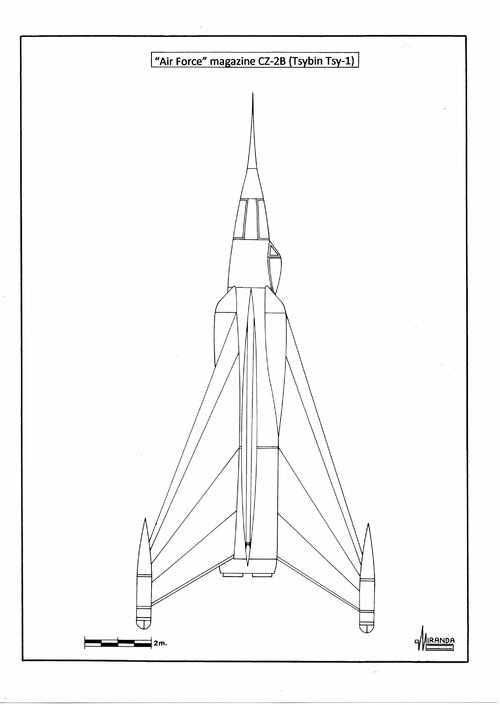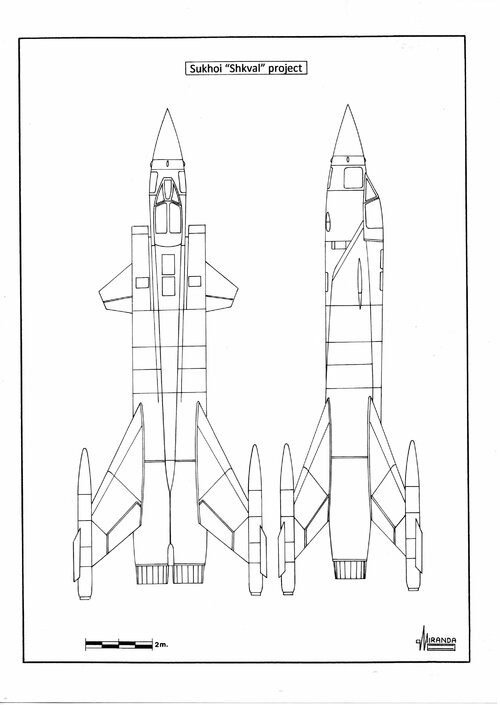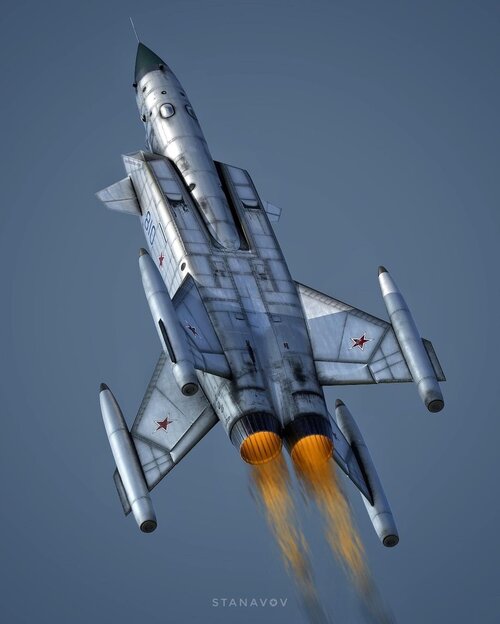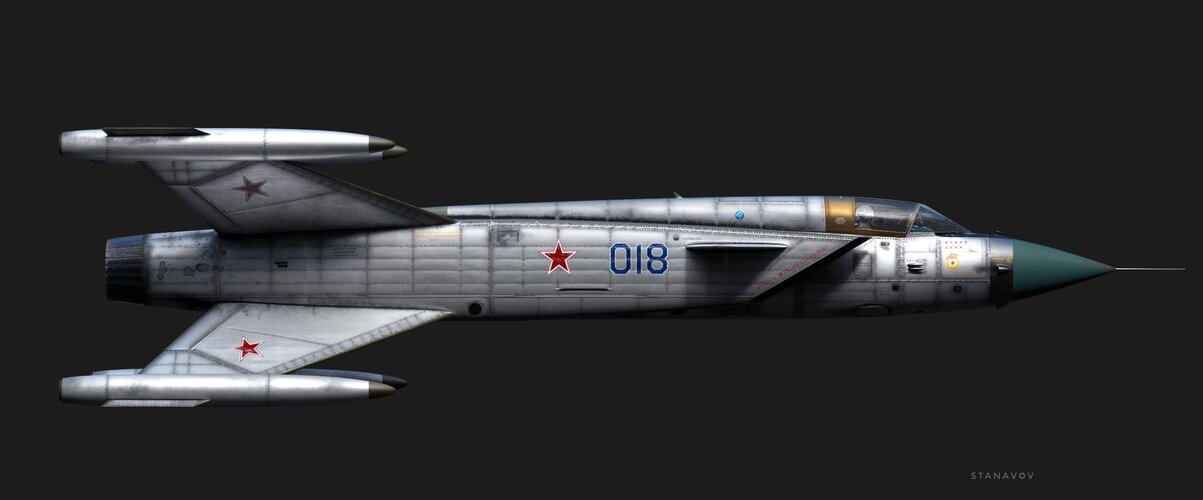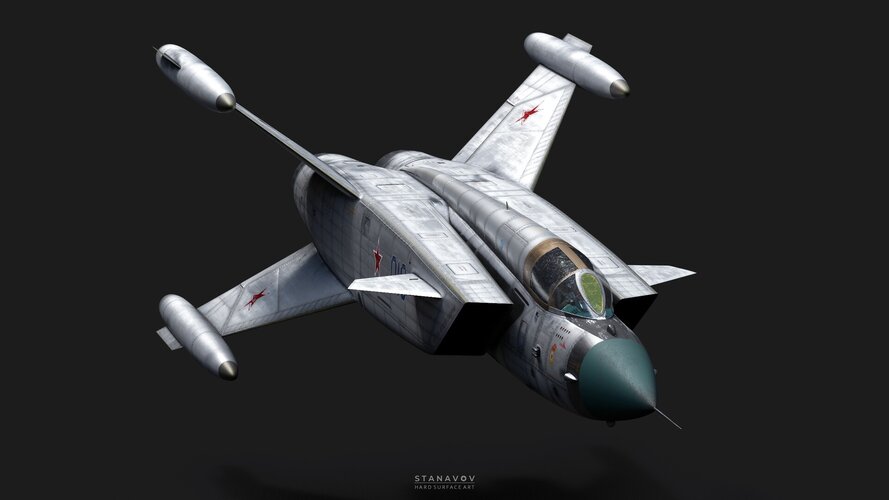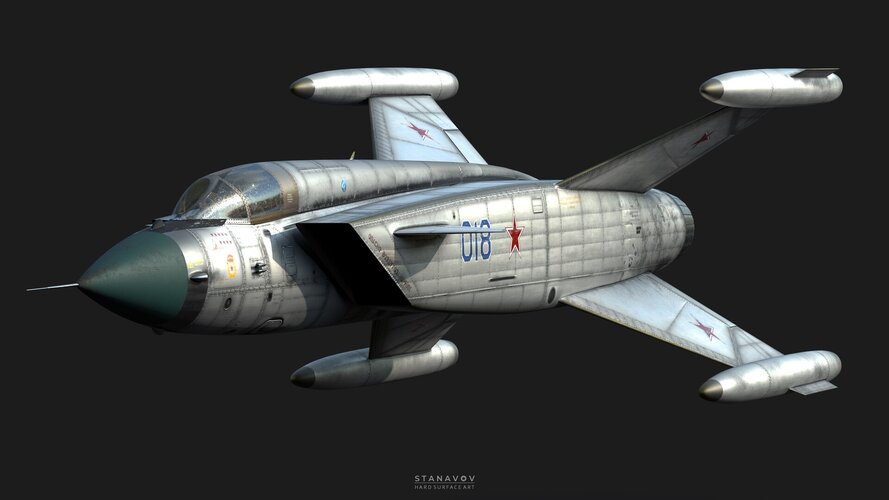You are using an out of date browser. It may not display this or other websites correctly.
You should upgrade or use an alternative browser.
You should upgrade or use an alternative browser.
Sukhoi Shkval Tailsitter Fighter
- Thread starter hesham
- Start date
piginapoke
I really should change my personal text
- Joined
- 11 March 2013
- Messages
- 91
- Reaction score
- 114
There is a short film called Firebase made by Oats Studios (owned by Neil Blokamp, director of District 9, Chappie etc). The short film has a variation of this landing and attacking (in that order) a US base in Vietnam. Check it out on YouTube
It's the same design published in Air Force magazine.Justo,
Hesham was probably referring to your post # 34, and if his link from the book "Unflown Wings" by Gordon and Komissarov were more, you wouldn't have to do the last post ...
Phantom Fanatic
the ATF program was truly great
- Joined
- 27 October 2022
- Messages
- 79
- Reaction score
- 102
- Fake Tail Sitter
On January 8, 1941, an engineer of the Bell Aircraft Corporation named Arthur Young applied for a patent of a tail sitter VTOL airplane. It was propelled by one radial engine located behind the pilot driving two big contra-rotating propellers by means a geared drive shaft.
It was a clever application of the technology developed by Bell in 1937 to propel the P-39 fighter.
For security reasons the patent Nº 2382460 was not published until August 14, 1945.
In 1946 the Juriev OKB bureau of design developed the Juriev KIT-1, a VTOL point defence interceptor based on the propulsion system of the Bell P-39 Airacobra.
The novelty, compared with the Young design, consisted of the usage of two propellers with different diameter.
The forward two bladed metallic propeller, with 4.28 m of diameter, was used for propulsion purposes only, the rear one, with 9.28 m of diameter, had a light structure partially covered by fabric and was used to balance the rotation of the other during take-off and landing.
The stability in vertical flight was achieved by the wing and tail control surfaces.
In horizontal flight, the rotor was disconnected from the drive shaft and blocked in parallel to the wing, with zero-degree pitch, acting as a canard plane.
Bibliography: Soviet magazine Technika-Molodiozhi, 1983.
Juriev KIT-1 Technical data
Power plant: one 1,100 hp. Klimov VK-108 liquid cooled piston engine, wingspan: 30 ft. (9.12 m), length: 25.8 m (7.89 m), wing surface: 300 sq. ft. (27 sq. m), armament: two wing mounted 20 mm ShWAK cannons or four 12.7 mm Beresin BS heavy machine guns.
During the fifties, in the event of a major war breaking out, both sides were expected to use tactical nuclear weapons to disable the enemy's air bases.
Aircraft designers engaged in programmes to develop vertical take-off and vertical landing airplanes, able to survive the first wave of nuclear attacks by deploying to dispersal locations.
The French developed the SNECMA C.450 Coléoptere, the North Americans the Convair XFY Pogo, the Lockheed XFV Salmon and the Ryan X-13 Vertijet. All these models were of the tail sitter type and were powered by turbojets or turboprops.
On the contrary, the Soviets did not need to develop a successor to the KIT-1 because their strategy in case of war was to use their numerical superiority.
However, in February 1953, Air Force magazine published the article "Vertical Take-off: Russia's Answer to the Global Bomber?”
According to author Charles W. Cain, the Soviet chief of staff thought that the MiG-15 climb rate was not enough to intercept the B-36 bombers. But with the use of a VTOL rocket fighter, of the German Bachem Natter class, the interception time could be reduced to just two minutes.
Air Force magazine also published two illustrations of the “CZ-2B” VTOL jet fighter, designed in 1947 at the Polish Technical Institute by the engineers Zarankiewicz and Wojciechowski, under the leadership of the Russian Dr. J.V. Stepanchev.
The CZ-2B was a tail sitter with delta wing, dorsal/ventral air-intakes and three tailfins with shock-absorbers bumpers.
In 1947 the only Soviet turbojet powerful enough to power a VTOL fighter was the Lyulka TR-2 with 2,500 kg thrust and the CZ-2B had to be designed with a maximum take-off weight of just 4,415 lb. (2,000 kg), 42 ft. (12.8 m) wingspan, 54.2 ft. (16.5 m) length, 21.7 ft. (6.6 m) height and 450 sq. ft. (40.5 sq. m.) wings surface.
They are not believable figures, by comparison the Western designs that had been built using more advanced technologies weighed much more: The SNECMA C.450 Coléoptere weighed 6,614 lb. (3,000 kg), the Convair XFY Pogo 16,250 lb. (7,371 kg), the Lockheed XFV Salmon 16,221 lb. (7,358 kg) and the Ryan X-13 Vertijet 7,200 lb. (3,272 kg).
The project would only have worked using two TR-2 turbojets.
The CZ-2B was expected to use two ribbon parachutes housed in the nose to perform vertical landings. It seems like an idea taken from the 1950 movie "Destination Moon" something that detracts from the credibility of the Air Force article.
The version published in 1955 in the color cover of CIELO magazine had several retro-rockets on the back of the fuselage, possibly to facilitate the landing.
In June 1955 LIFE published three new illustrations in which the plane lacked air intakes, probably the cartoonist McCoy thought it was a rocket spaceship.
According to the magazine the new fighter was already in mass production and it had been sighted in Korea by F-86 pilots.
In September 1957 Air Pictorial published: “A vertical take-off and landing turbojet-powered aircraft similar to the Ryan X-13 has been tested, and reports state that it has excellent low speed handling characteristics and a very high rate of climb.”
In April 1955 the Soviet CPSU Central Committee ordered the development of a “zero-length” launch system for the MiG-19S interceptor.
On April 13, 1957 the prototype MiG-19 SM-30 was launched at 4.5 g from a Pu-30 ramp powered by one PRD-22 rocket booster with 40,000 kg/sec peak thrust.
In the operational version it was planned to use tail hooks and braking parachutes to land on very short runways.
The North American A-5 Vigilante was a carrier-based supersonic bomber designed in 1956.
When the new aircraft entered service with the US Navy in 1961, the Soviets decided to use the technology of their rectangular air intakes with variable ramp engine inlets in the design of the MiG-25 Foxbat fighter.
In 1963 Sukhoi OKB proposed to the Ministry of Aircraft Engineering the construction of the Shkval, a twin-engine canard tail sitter, designed with structural solutions of the MiG-25, a concept similar to the British project Avro 724.
The new VTOL fighter lacked wings and was equipped with four tailfins and landing pods mounted in “X” configuration.
Until 1960 the Soviets did not have turbojets with enough power to power a VTOL fighter.
The MiG-25 used two axial-flow Tumansky R-25 turbojets, with 22,503 lbs. (10,200 kg) thrust each, but weighed 80,954 lb. (36,720 kg) because it was built in an 80 per cent nickel-steel alloy, with 11 per cent Aluminum and 9 per cent Titanium.
The Soviets could not duplicate the construction technology of the Vigilante, made of Aluminum-Lithium alloy and Titanium.
In 1963 it was not considered possible to build a VTOL version of the Foxbat that weighed less than 30 tons and the maximum thrust that could be obtained with the most advanced versions of the R-25 turbojet was 24,700 lbs. (11,189 kg) using afterburner.
It was expected that the Shkval would have to withstand 9G loads during combat and its structure should be reinforced to withstand impacts upon landing, it would have been necessary to further increase its structural weight.
In August 1963 the Shkval project was cancelled in favor of the new SAM missiles.
In 2013, Yefim Gordon's book "Unflown Wings" (Classic Publications) was published with a drawing of the CZ-2B and the caption: “A provisional drawing of the Tsybin Tsy-1 tailsitter VTOL interceptor”.
Attachments
,
Last edited:
BestPlanes
ACCESS: Restricted
- Joined
- 1 November 2019
- Messages
- 3
- Reaction score
- 5
Erdosain
ACCESS: Secret
- Joined
- 10 March 2020
- Messages
- 479
- Reaction score
- 1,978
Proyectos y aeronaves de investigación S/VTOL Soviéticos
Aviones de investigación S/VTOL Soviéticos INTRODUCCIÓN En la inmediata posguerra aparecieron algunos proyectos S/VTOL en la URSS que no pasaron de la mesa de dibujo y algunos estudios experimentales, entre ellos podemos nombrar el Kit-1 propuesto en 1946 por Boris Yuryev impulsado por un...
www.zona-militar.com
Attachments
Erdosain
ACCESS: Secret
- Joined
- 10 March 2020
- Messages
- 479
- Reaction score
- 1,978
The Tsybin Tsy-1 Tail Sitter VTOL Fighter
The only source for this project is a blueprint showing a single-seat turbojet-powered fighter designed as a Tail Sitter, i.e. a VTOL fighter that took off vertically and then transitioned to horizontal flight.
The conventional-looking forward fuselage possibly housed a fire control radar in its bulky pointed nose, then there was the cockpit for the pilot who sat with his back to the ground in takeoff and landing position.
The central and rear area of the fuselage was occupied by two turbojets located one above the other in an arrangement similar to that of the BAC Lightning. Two-dimensional, flattened air intakes were located behind and below the cockpit.
The mid-set wing appears to be of the delta type. The vertical tail of generous surface area was complemented by two extended surfaces under the wings (separated 120° from each other) which apparently also served as horizontal tails. These two surfaces seem to have the same dimensions and surface area as the vertical tail.
The tip of each of these three surfaces housed, within a fairing, the extendable landing gears, each equipped with a wheel, which, apart from their take-off and landing functions, allowed the fighter to move on the ground.

Source:
“Unflown Wings” Soviet and Russian Unrealized Aircraft Projects 1925-2010, by Yefim Gordon and Sergei Komissarov.
The only source for this project is a blueprint showing a single-seat turbojet-powered fighter designed as a Tail Sitter, i.e. a VTOL fighter that took off vertically and then transitioned to horizontal flight.
The conventional-looking forward fuselage possibly housed a fire control radar in its bulky pointed nose, then there was the cockpit for the pilot who sat with his back to the ground in takeoff and landing position.
The central and rear area of the fuselage was occupied by two turbojets located one above the other in an arrangement similar to that of the BAC Lightning. Two-dimensional, flattened air intakes were located behind and below the cockpit.
The mid-set wing appears to be of the delta type. The vertical tail of generous surface area was complemented by two extended surfaces under the wings (separated 120° from each other) which apparently also served as horizontal tails. These two surfaces seem to have the same dimensions and surface area as the vertical tail.
The tip of each of these three surfaces housed, within a fairing, the extendable landing gears, each equipped with a wheel, which, apart from their take-off and landing functions, allowed the fighter to move on the ground.
Source:
“Unflown Wings” Soviet and Russian Unrealized Aircraft Projects 1925-2010, by Yefim Gordon and Sergei Komissarov.
Similar threads
-
-
VTOL Light-Weight Day Fighter studies, 1953-1957
- Started by overscan (PaulMM)
- Replies: 7
-
A question about the cockpit of the Goodyear GA-28A/B
- Started by Tim52413
- Replies: 1
-
-
Alleged Dassault VTOL tailsitter project
- Started by Jemiba
- Replies: 12

